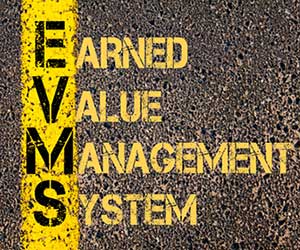
Getting an early indicator of deviations from the project plan can be a game changer for project managers. This is precisely the main benefit of the earned value method, and its diligent application can do wonders for a project manager’s career.
Planned Value, usually abbreviated as PV, is one of the fundamental inputs of the Earned Value Management System. It is defined by the Project Management Institute as:
- The authorized, time-phased budget assigned to accomplish the scheduled work
It is one of 3 pieces of data that the project manager collects before applying the earned value formulas to determine the project’s schedule and budget status. The other two are Earned Value (EV), and Actual Cost (AC).
It tells the project manager how much of the project work was planned to be performed at the point of analysis (usually today).
Formula
Although there is no official formula for Planned Value, a good way to determine it is via planned percent complete.
The units are usually monetary (dollars, euros, etc.) but other units such as hours or work production units (such as the amount of lumber installed) can also be used. However, if non-monetary units are used, the whole earned value analysis needs to use the same units, and this can lead to difficulty interpreting the budget status. Specifically, the Cost Variance will not be in monetary units which will make it difficult to figure out how far above or below the budget the project is.
The Planned Value must be calculated on a task by task basis and summed to produce the project’s Planned Value.
Determining the planned percent complete (by date) is an easy way to measure Planned Value. But other methods could be used, like planned number of hours complete, or planned number of work units (like amount of lumber installed).
Many tasks are not completed in a linear fashion. For example, in the task called “Set Up Database” the task might require one person for the first 5 days and four people for the last 5 days. This results in the cost of the task being mostly incurred at the tail end, and skews the earned value results if you use a linear percent complete.
Most tasks should be small enough that this is not a major issue. But if you must account for this non-linearity in the task’s work you can use a non-linear Planned Value.
Background
In the earned value method, Planned Value is one of 3 metrics which must be determined for each task within the project. The other two are:
- Earned Value (EV)
- Actual Cost (AC)
A fourth value, the Budget at Completion (BAC), completes the list of four inputs into the earned value management system. However, the BAC does not need to be determined for each task. It represents the total project budget which is usually a well known value.
Planned Value is also known as Budgeted Cost of Work Scheduled (BCWS) but the Project Management Institute has moved away from this terminology.
Interpretation
Let’s take an example project task. The budget and schedule baseline, which are developed during the project planning phase, are:
| ID | Name | Budget | Start | End |
|---|---|---|---|---|
| 100 | Set up Database | $10,000 | Mar. 1 | Mar. 10 |
When the earned value analysis is performed, the project manager determines PV for the task:
- If it’s March 5 today, the Planned Value is 50% x $10,000 = $5,000.
- If it’s March 10 today, the Planned Value is 100% x $10,000 = $10,000.
- If it’s March 8 today, but the cost of the task will be incurred 20% in the first five days and 80% in the last five days, the Planned Value can be skewed non-linearly. Planned Value = 20% x $10,000 + 80% x $10,000 x 3/5 = $6,800.
Related Earned Value Metrics
The other inputs to the earned value method are as follows:
- Earned Value (EV): Also known as Budgeted Cost of Work Performed (BCWP), Earned Value is the amount of the task that is actually completed. It is calculated from the project budget.
EV = % Complete (Actual) x Task Budget
For example, if the actual percent complete is 75% and the task budget is $10,000, EV = 75% x $10,000 = $7,500.
- Actual Cost (AC): Also known as Actual Cost of Work Performed (ACWP), Actual Cost is the real amount that has been spent on the task. It should include any item of expense that was necessary to complete the task even if it is not easily defined, like worker benefits. It should include labor, materials, equipment, subcontractors and other fixed expenses.
AC = Actual Cost
For example, if the actual cost is $200 for software subscriptions and $1,000 for labor, AC = $200 + $1,000 = $1,200.
Earned Value Example
This example will walk you through a basic earned value calculation for a hypothetical project with two tasks.
Before we start, the baseline developed during project planning is:
| ID | Task | Start date | End Date | Budget |
|---|---|---|---|---|
| 100 | Set up Database | Mar. 1 | Mar. 10 | $10,000 |
| 200 | Enter Data | Mar. 5 | Mar. 15 | $30,000 |
| TOTAL | $40,000 | |||
Let’s say it’s Mar. 11. Determine the Planned Value, Earned Value, and Actual Cost for the Project.
Step 1: Determine Planned Value (PV)
- Task 100 is supposed to be complete. PV = $10,000.
- Task 200 is supposed to be 60% complete, because it’s Mar. 11 and the task goes from Mar. 5 to Mar. 15. Therefore, PV = 60% x $30,000 = $18,000.
We will add a column called ‘PV’ to the table.
| ID | Task | Start date | End Date | Budget | PV |
|---|---|---|---|---|---|
| 100 | Set up Database | Mar. 1 | Mar. 10 | $10,000 | $10,000 |
| 200 | Enter Data | Mar. 5 | Mar. 20 | $30,000 | $18,000 |
| TOTAL | $40,000 | $28,000 | |||
Step 2: Determine Earned Value (EV)
Please note, the determination of PV, above, is derived from the Percent Complete (Planned), which is different than Percent Complete (Actual). Since this is not a real project we will have to make an assumption for Percent Complete (Actual). Let’s say the tasks are 75% and 50% complete, respectively.
- Task 100 is 75% complete, therefore EV = 75% x $10,000 = $7,500.
- Task 200 is 50% complete, therefore EV = 50% x $30,000 = $15,000.
Next we will add a column called EV.
| ID | Task | Start date | End Date | Budget | PV | EV |
|---|---|---|---|---|---|---|
| 100 | Set up Database | Mar. 1 | Mar. 10 | $10,000 | $10,000 | $7,500 |
| 200 | Enter Data | Mar. 5 | Mar. 20 | $30,000 | $18,000 | $15,000 |
| TOTAL | $40,000 | $28,000 | $22,500 | |||
Step 3: Determine Actual Cost (AC)
Since this is a fictional project we will have to make another assumption.
- Task 100’s actual cost is $12,000.
- Task 200’s actual cost is $13,000.
Next we will add a column called AC.
| ID | Task | Start date | End Date | Budget | PV | EV | AC |
|---|---|---|---|---|---|---|---|
| 100 | Set up Database | Mar. 1 | Mar. 10 | $10,000 | $10,000 | $7,500 | $12,000 |
| 200 | Enter Data | Mar. 5 | Mar. 20 | $30,000 | $18,000 | $15,000 | $13,000 |
| TOTAL | $40,000 | $28,000 | $22,500 | $25,000 | |||
Step 4: Determine Schedule Variance (SV) and Schedule Performance Index (SPI)
SV = EV – PV.
SPI = EV / PV.
| ID | Task | Start date | End Date | Budget | PV | EV | AC | SV | SPI |
|---|---|---|---|---|---|---|---|---|---|
| 100 | Set up Database | Mar. 1 | Mar. 10 | $10,000 | $10,000 | $7,500 | $12,000 | -$2,500 | 0.75 |
| 200 | Enter Data | Mar. 5 | Mar. 20 | $30,000 | $18,000 | $15,000 | $13,000 | -$3,000 | 0.83 |
| TOTAL | $40,000 | $28,000 | $22,500 | $25,000 | -$5,500 | 0.81 | |||
The project is behind schedule because SV is negative. Likewise, both tasks within the project are behind schedule because their SV’s are negative. The project is behind schedule by $5,500 (out of the total project budget of $40,000) which seems significant, and the SPI of 0.81 says that the project should have accomplished 19% more than it actually has at this point. Clearly this project manager has work to do if this project is to finish on time.
Step 5: Determine Cost Variance (CV) and Cost Performance Index (CPI)
CV = EV – AC.
CPI = EV / AC.
| ID | Task | Start date | End Date | Budget | PV | EV | AC | CV | CPI |
|---|---|---|---|---|---|---|---|---|---|
| 100 | Set up Database | Mar. 1 | Mar. 10 | $10,000 | $10,000 | $7,500 | $12,000 | -$4,500 | 0.63 |
| 200 | Enter Data | Mar. 5 | Mar. 20 | $30,000 | $18,000 | $15,000 | $13,000 | $2,000 | 1.15 |
| TOTAL | $40,000 | $28,000 | $22,500 | $25,000 | -$2,500 | 0.90 | |||
On the cost side, one task is over budget and one is under budget. But the total CV is negative therefore the project is over budget. The CPI of 0.90 means the project has spent 10% more than it should have at this point.
In this case the project is behind schedule and over budget, but the budget problems are not nearly as significant. The project can probably finish under budget with a minor corrective effort. The schedule, on the other hand, is experiencing major delays and requires immediate action.
As you can see, an executive can be given this earned value report and instantly grasp the status of the project. They can see where the project is experiencing problems and how bad they are.






